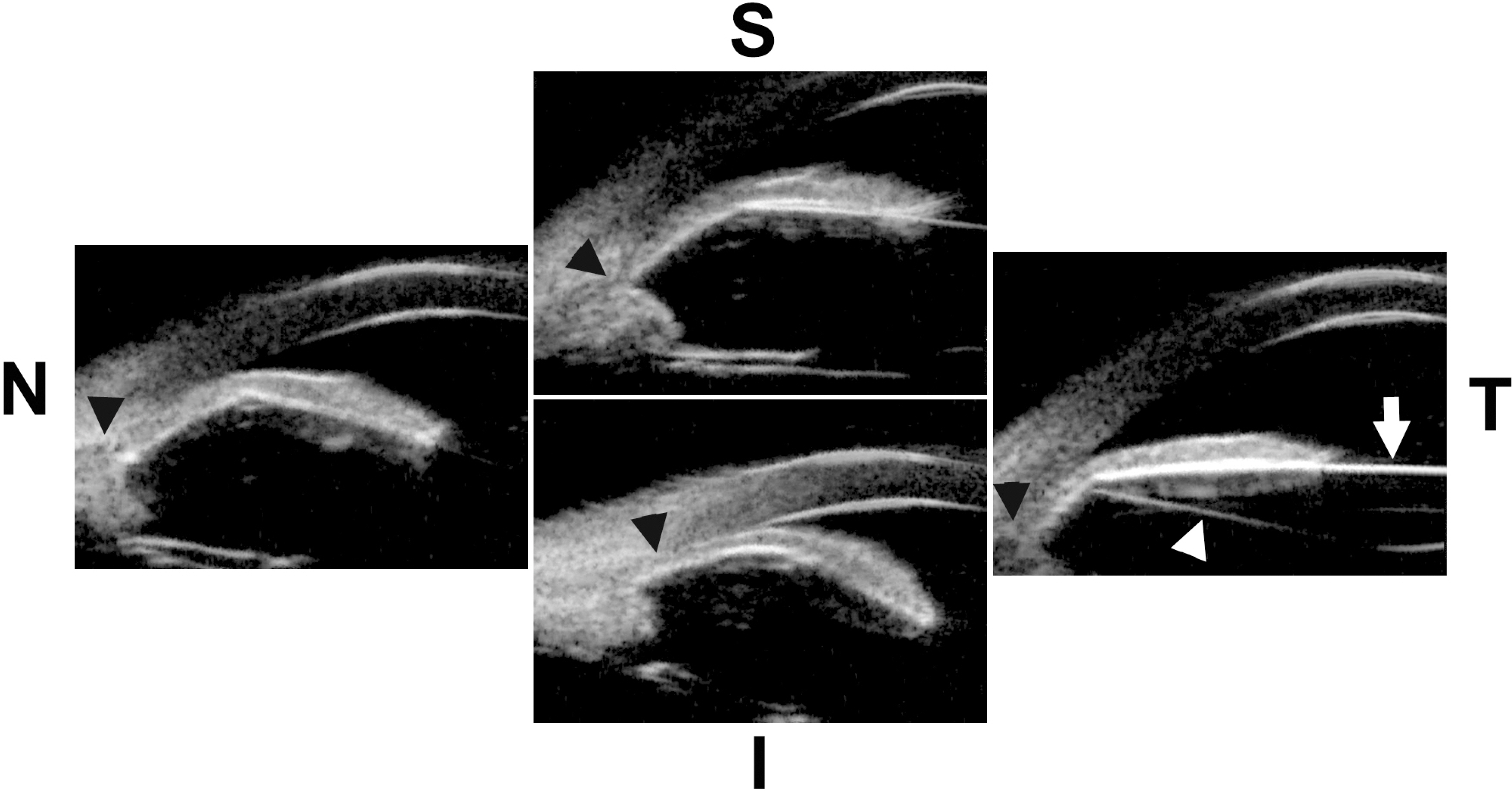J Korean Ophthalmol Soc.
2016 Sep;57(9):1493-1497. 10.3341/jkos.2016.57.9.1493.
A Case of Acute Angle Closure Caused by Dislocation of Accommodative Intraocular Lens
- Affiliations
-
- 1Myung-Gok Eye Research Institute, Department of Ophthalmology, Kim's Eye Hospital, Konyang University College of Medicine, Seoul, Korea. brainh@hanmail.net
- 2Seoul Ire Eye Clinic, Seoul, Korea.
- KMID: 2351885
- DOI: http://doi.org/10.3341/jkos.2016.57.9.1493
Abstract
- PURPOSE
To report a case of acute angle closure after cataract surgery using an accommodative intraocular lens (IOL), WIOL-CF® (GELMED, Praha, Czech).
CASE SUMMARY
A 46-year-old male patient underwent phacoemulsification and implantation of WIOL-CF® into the capsular bag. Seven months after the surgery, a sudden increase in intraocular pressure (IOP) associated with angle closure was observed. Ultrabiomicroscopy revealed a dislocated WIOL-CF® that was pushing the peripheral iris anteriorly. Despite the use of IOP-lowering medication and peripheral laser iridotomy, IOP was not controlled. After the use of cycloplegics, the angle was widened and IOP decreased; however, after nine days, the WIOL-CF® was completely dislocated into the anterior chamber and so was removed.
CONCLUSIONS
When performing cataract surgery using WIOL-CF®, a possibility of dislocation of IOL and subsequent angle closure should be considered.
MeSH Terms
Figure
Reference
-
References
1. Studeny P, Krizova D, Urminsky J. Clinical experience with the WIOL-CF accommodative bioanalogic intraocular lens: Czech national observational registry. Eur J Ophthalmol. 2016; 26:230–5.
Article2. Pallikaris IG, Portaliou DM, Kymionis GD, et al. Outcomes after accommodative bioanalogic intraocular lens implantation. J Refract Surg. 2014; 30:402–6.
Article3. Lee HS, Park SH, Kim MS. Clinical results and some problems of multifocal apodized diffractive intraocular lens implantation. J Korean Ophthalmol Soc. 2008; 49:1235–41.
Article4. Cheon MH, Lee JE, Kim JH, et al. One-year outcome of monocular implant of aspheric multifocal IOL. J Korean Ophthalmol Soc. 2010; 51:822–28.
Article5. Kang KT, Kim YC. Dislocation of polyfocal full-optics abdominal intraocular lens after neodymium-doped yttrium aluminum garnet capsulotomy in vitrectomized eye. Indian J Ophthalmol. 2013; 61:678–80.
- Full Text Links
- Actions
-
Cited
- CITED
-
- Close
- Share
- Similar articles
-
- A Case of Pupillary Block Glaucoma with Familial Exudative Vitreoretinopathy
- Biometric Measurements in Acute Angle Closure Glaucoma
- Biometric Comparisons between Acute and Chronic Angle Closure Glaucoma
- A Case of Iridoshisis with Angle Closure Glaucoma
- Influence of Lens Factor and Effect of Selected Cataract Extraction on Acute Angle-Closure Glaucoma





